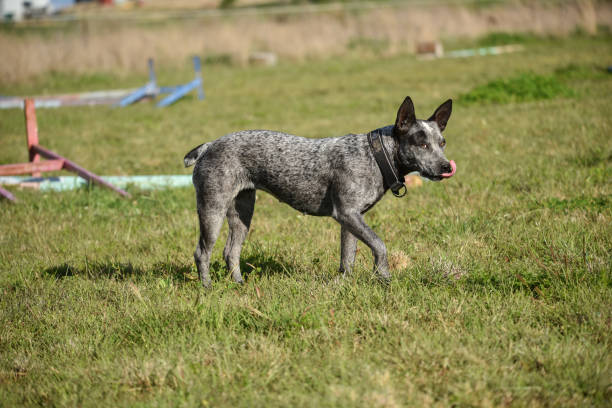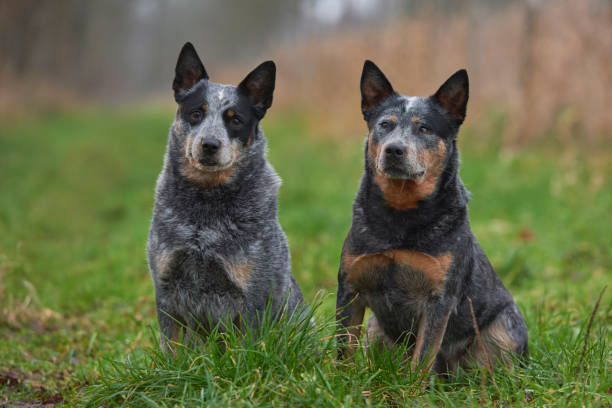Australian Stumpy Tail Cattle Dog

Breed History:
The Australian Stumpy Tail Cattle Dog (ASTCD) is Australia’s oldest domestically developed herding breed, distinct from the Australian Cattle Dog. It was created in the early 19th century by crossbreeding Smithfield herding dogs, dingos, and possibly Smooth Collies to herd cattle across vast, rugged terrain.
Unlike its more popular cousin, the Australian Cattle Dog, the Stumpy was bred with a focus on working ability over appearance and is defined by its naturally short tail, not docked. Though once at risk of disappearing, efforts in the late 20th century revived the breed, and it’s now recognised by kennel clubs like the ANKC and FCI.
|
Gender |
Height |
Weight |
|
Male |
46-51 cm |
20-28 kg |
|
Female |
43-48 cm |
18-25 kg |
Size: Medium
Life Expectancy: 12–15 years

Breed Appearance:
The ASTCD is a well-proportioned, square-shaped, and athletic dog with a natural bobtail (generally no longer than 10 cm). It has a broad head, erect ears, and alert, intelligent eyes that project confidence and energy.
Its short, dense double coat is weather-resistant and comes in blue speckle or red speckle, often with minimal white markings. Unlike the Australian Cattle Dog, it typically has less tan colouring and a more upright, leggy build.
Breed Type – Herding/Working:
This is a high-drive working breed, originally developed solely for the task of herding cattle. The ASTCD is independent, courageous, and focused, with a strong desire to work and please its handler.
It is loyal but tends to be more reserved and less affectionate than other herding breeds. The ASTCD excels in a rural or farm setting, where it can use its instincts and stamina.

Training:
The Stumpy Tail is intelligent and learns quickly, but its independence and strong will demand firm, fair, and consistent training. Harsh methods are counterproductive—positive reinforcement is best.
Start early socialisation and obedience training to prevent potential behaviour issues like aloofness, stubbornness, or excessive wariness of strangers.
Health & Care:
Generally, a robust and hardy breed, the ASTCD can be prone to:
-
Progressive retinal atrophy (PRA)
-
Deafness
-
Hip dysplasia
-
Congenital tail malformations (in some lines)
Regular health screenings and sourcing puppies from responsible breeders are important. Keep the dog lean and active, with routine checkups to maintain long-term health.

Living Conditions:
This breed thrives in rural environments with open space and purpose. It can adapt to suburban homes only if given significant daily exercise and mental stimulation.
It is not ideal for apartment living or inactive homes. Without proper outlets for energy and intelligence, the ASTCD can become frustrated and destructive.
Exercise:
The ASTCD needs at least 1–2 hours of vigorous daily exercise:
-
Long walks, runs, or hikes
-
Structured games and obedience work
-
Herding practice or agility training
-
Jobs around the property or working farm
This is not a couch potato breed—a bored Stumpy will create its own (often undesirable) tasks.
Grooming:
Low grooming requirements:
-
Weekly brushing to manage shedding
-
Seasonal coat blowouts during spring/fall
-
Bathing as needed, though the coat is naturally clean
-
Routine nail trimming, ear cleaning, and dental care
Shedding is moderate but increases during moulting periods.

Advantages:
-
Tough, resilient, and hardworking
-
Highly intelligent and trainable
-
Loyal and dependable with the right handler
-
Minimal grooming needs
-
Excellent for farms and herding work
-
Long-lived and generally healthy
Disadvantages:
-
Needs intense daily exercise and mental stimulation
-
Aloof or reserved with strangers
-
Not very affectionate—independent by nature
-
May try to herd children or pets
-
Not suited for apartment living or inactive owners
-
Can become stubborn or destructive if under-stimulated

